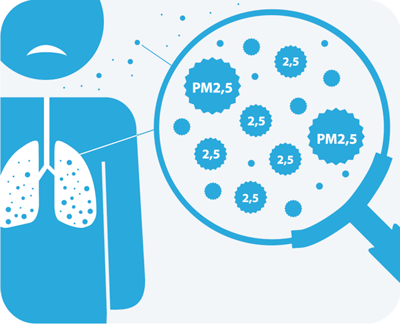


[File photo]
China has established a network to monitor PM 2.5 levels nationwide, in a move meant to hasten the reduction of the country’s air pollution and cut down on fraudulent data.
The network includes manual sampling stations and laser radar stations. Analysts can even monitor the movement of air pollutants via airborne platforms, Chen Jining, head of the Ministry of Environmental Protection, told Science and Technology Daily.
“We’ve established a monitoring network to keep track of particles. The network consists of satellite sensing and ground base sensing; the first method supervises the overall process and the second monitors the transportation of pollutants,” said Li Qian, a scholar from Beijing Municipal Environmental Monitoring Center.
The implementation of satellite remote sensing technologies can also put an end to data fraud, experts say.
In October 2016, several environmental protection officials in Xian, Shaanxi province tampered with air quality monitoring equipment to create falsified data, resulting in a scandal that triggered public concern over the authenticity of such data.
“Though data collected by ground base stations can be manually forged, real-time satellite data cannot be changed, which prevents [officials] from falsifying data,” said He Kebin, a professor at Tsinghua University.
The optimization of China’s 1,436 air quality monitoring sites will be put on the agenda during China's 13th Five-Year Plan (2016-2020), while 16 new air monitoring background stations and 96 regional stations will be established to tackle air pollution, Science and Technology Daily reported.
 Fire brigade in Shanghai holds group wedding
Fire brigade in Shanghai holds group wedding Tourists enjoy ice sculptures in Datan Town, north China
Tourists enjoy ice sculptures in Datan Town, north China Sunset scenery of Dayan Pagoda in Xi'an
Sunset scenery of Dayan Pagoda in Xi'an Tourists have fun at scenic spot in Nanlong Town, NW China
Tourists have fun at scenic spot in Nanlong Town, NW China Harbin attracts tourists by making best use of ice in winter
Harbin attracts tourists by making best use of ice in winter In pics: FIS Alpine Ski Women's World Cup Slalom
In pics: FIS Alpine Ski Women's World Cup Slalom Black-necked cranes rest at reservoir in Lhunzhub County, Lhasa
Black-necked cranes rest at reservoir in Lhunzhub County, Lhasa China's FAST telescope will be available to foreign scientists in April
China's FAST telescope will be available to foreign scientists in April "She power" plays indispensable role in poverty alleviation
"She power" plays indispensable role in poverty alleviation Top 10 world news events of People's Daily in 2020
Top 10 world news events of People's Daily in 2020 Top 10 China news events of People's Daily in 2020
Top 10 China news events of People's Daily in 2020 Top 10 media buzzwords of 2020
Top 10 media buzzwords of 2020 Year-ender:10 major tourism stories of 2020
Year-ender:10 major tourism stories of 2020 No interference in Venezuelan issues
No interference in Venezuelan issues
 Biz prepares for trade spat
Biz prepares for trade spat
 Broadcasting Continent
Broadcasting Continent Australia wins Chinese CEOs as US loses
Australia wins Chinese CEOs as US loses